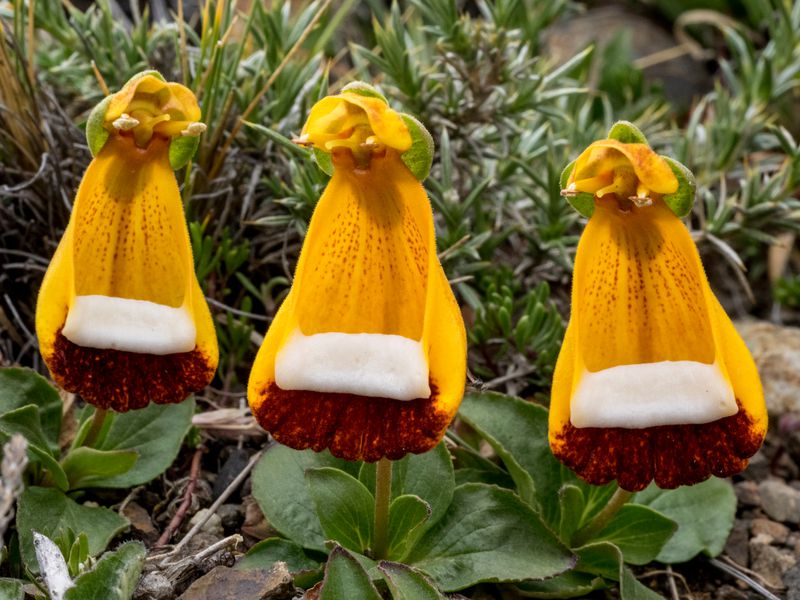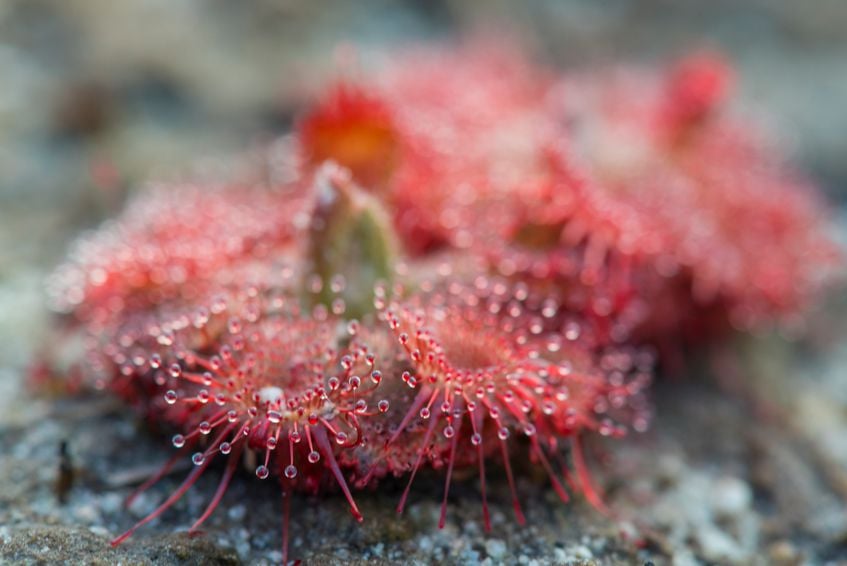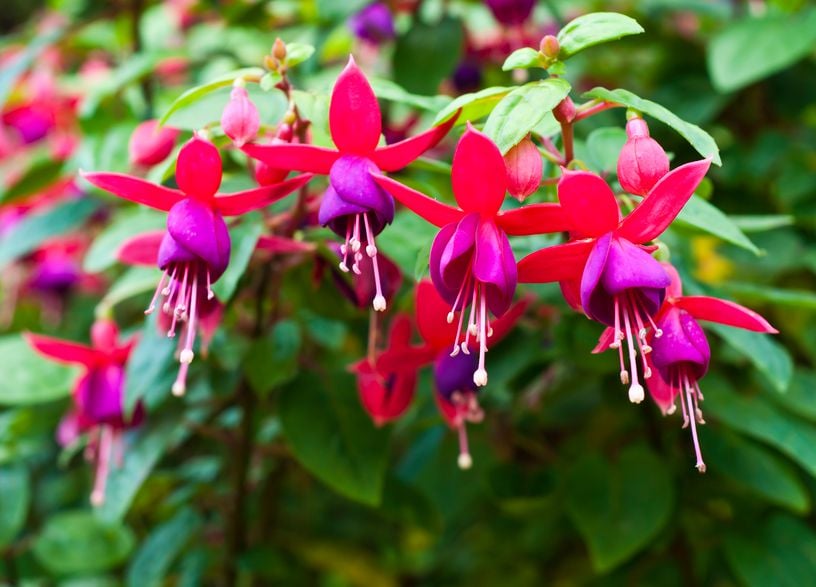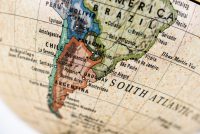Although Darwin was not struck by the flora of Patagonia, describing the landscape as “extremely uninteresting” and “sterile”, the plants that have evolved here don’t deserve to be dismissed so easily. Particularly in the far south, the plant species and Patagonia flowers that have evolved to cope with the prevailing cold temperatures, strong winds and extensive precipitation give testament to their unique durability in a hostile climate.
The area was initially colonized by lichens and mosses when the glaciers began to retreat 12,000 years ago, but nowadays an array of Patagonia flowers populate this region. So if you’re hoping to admire some unique flora on a trip here, you won’t be disappointed.
Patagonia flowers to look out for
Lady’s slipper, slipper flower, pocketbook flower (calceolaria biflora)
 This plant has yellow flowers shaped like slippers and is most often seen in Torres del Paine National Park, although it is found along the full length of the Andes from Patagonia to the very north of South America.
This plant has yellow flowers shaped like slippers and is most often seen in Torres del Paine National Park, although it is found along the full length of the Andes from Patagonia to the very north of South America.
Fachine or mata verde (chiliotrichum diffusum)
Once an important flower for indigenous peoples in Patagonia, as they used it for its antiseptic properties, this small, flowering shrub is part of the daisy family and is distinctive for its white petals and yellow pistil. It is found in steppe grasslands in Patagonia.
Streaked maiden (olsynium biflorum)
A member of the iris family, flowers of the streaked maiden plant are bell-shaped with white petals that bloom from late winter to spring. They are mostly found in the Santa Cruz and Tierra del Fuego regions of Patagonia.
Paramela (adesmia boronioides)
This shrub has yellow flowers and is found in the mountains of Patagonia at altitudes between 6,500 ft. (2,000m) and 11,500 ft. (3,500m) above sea level.
Sundew (drosera uniflora)
 One of the few carnivorous Patagonia flowers, this plant is native to southern Chile, Argentina and the Falkland Islands. It secretes sticky mucilage from its leaves to capture insects. It has evolved this technique in order to supplement the nutrients that it cannot acquire from living in areas of bog and moorland, such as in parts of Tierra del Fuego.
One of the few carnivorous Patagonia flowers, this plant is native to southern Chile, Argentina and the Falkland Islands. It secretes sticky mucilage from its leaves to capture insects. It has evolved this technique in order to supplement the nutrients that it cannot acquire from living in areas of bog and moorland, such as in parts of Tierra del Fuego.
Holly-leaved barberry (berberis ilicifolia)
This evergreen shrub has orange petals and leaves reminiscent of those found on the holly bush. It produces dark purple berries between November and March and blooms between August and December in areas of Nothofagus woods across Patagonia.
Dwarf barberry or heath barberry (berberis empetrifolia)
It has small, yellow leaves and dark purple berries and is mostly found in high altitude regions of the Andes mountains.
Fuchsia (fuchsia magellanica)


 This plant grows in shaded areas close to watercourses and is characterised by its pendant-shaped, hanging red flowers. It is found in the very south of Chile in areas of high precipitation.
This plant grows in shaded areas close to watercourses and is characterised by its pendant-shaped, hanging red flowers. It is found in the very south of Chile in areas of high precipitation.
Magellan orchid or porcelain orchid (chloraea magellanica)
An ornately patterned species of orchid with white flowers comprising a network of green stripes, it is exclusively found in cold parts of Chile and Argentina. It blossoms during springtime and is one of only a handful of Patagonian flowers that are from the orchid family.
Waterfall plant (ourisia ruelloides)
It has red, bell-shaped flowers and inhabits dark, moist areas at lower altitudes. It’s most commonly found growing at the edges of waterfalls, streams or in humid forests.
Crimson spire (escallonia rubra)
This evergreen shrub grows in humid areas characterized by plenty of precipitation and full exposure to the sun. It has pink flowers with a large yellow pistil and grows between 4,000 ft. (1,200m) and 7,500 ft. (2,300m) above sea level.
No comments yet
There are no comments on this post yet.





Leave a comment